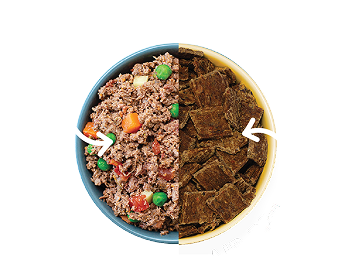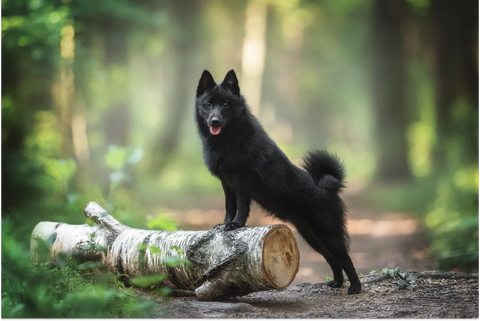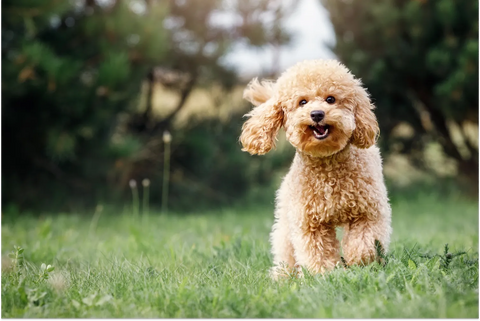
Can Dogs Get Colds? Preparing for Fall and Winter Months
As leaves turn golden and a chill fills the air, many pet owners notice their pets curling up closer to the heater. Many pet parents may wonder, “can our beloved dogs actually catch colds like we do?”
This inquiry isn't just about curiosity. It's a testament to the deep bond and care we share for our pets. After all, understanding is the first step to ensuring our pets stay warm, happy, and healthy during the chilly months.
The Reality of Dogs and Colds
First, let's set the record straight: dogs can't get colds like humans do. That’s right! The common cold, caused by the rhinovirus in humans, doesn’t affect dogs.
However, they can experience a range of respiratory infections that manifest symptoms similar to the human cold. The term "dog cold" is more of a colloquial expression used to describe these symptoms.
Before you breathe that sigh of relief, it’s essential to be aware that these canine respiratory infections can be just as concerning. During the colder months, factors like reduced humidity and exposure to sudden temperature changes can weaken a dog’s immunity, making them more susceptible.
And while any dog can catch these infections, puppies, senior dogs, or those with compromised immune systems are especially vulnerable. Understanding the kind of food your pup ingests plays a role in their overall health.
A Pup Above, born from genuine concern for a family dog's dietary needs, believes in the power of nutrition in acting as the first line of defense against these infections.
What Are Dog Cold Symptoms?
As humans show tell-tale signs when under the weather, our pets have their own set of indicators. Here’s a list of symptoms to watch out for:
- Sneezing: An occasional sneeze might just be a response to dust or excitement. But if your pup is sneezing frequently, it could indicate an issue.
- Coughing: This might be a sign of a respiratory infection or something lodged in their throat.
- Watery Eyes: Look out for excessive tearing or discharge.
- Nasal Discharge: A runny nose with a clear discharge is typical. However, if the fluid turns green or yellow, it’s time to consult the vet.
- Reduced Appetite: If your usually voracious eater turns away from their bowl, they might not be feeling their best.
- Lethargy: All dogs have their lazy days, but if they’re consistently less energetic or enthusiastic, it could be cause for concern.
Nutrition plays a pivotal role in maintaining a dog's health. Good nutrition and gently cooked foods filled with genuine flavors can boost a dog’s immune system, aiding in warding off infections or recovering faster.
Remember, these symptoms can range from mild to severe. Being proactive and recognizing early signs can lead to quicker interventions and happier, healthier pets.
How Do I Care for a Dog Showing Cold Symptoms?
Watching our furry friends feel under the weather can be a distressing experience. But with the right care, you can ensure they bounce back quickly.
- Warm Environment: Just as we crave a cozy blanket and a warm drink when we're feeling sick, dogs appreciate warmth, too. Ensure they have a comfy, warm spot away from drafts, preferably indoors during colder days.
- Hydration: Hydration is crucial. While water is the obvious choice, consider incorporating bone broth into their diet. Not only is it hydrating, but bone broth, an ingredient in A Pup Above's Gently Cooked Recipes, also packs essential nutrients.
- Consult a Vet: Always prioritize your pet's health. If symptoms persist or if you're concerned about any unusual behavior, schedule a visit to the vet. They'll guide medication or specific care routines.
- Nutrition: Now more than ever, what your dog eats matters. Turn to trusted food sources that prioritize your pet's health. Fresh food gently cooked, sous-vide can provide the nutrition they need without compromising on flavor or safety.
Preparing for Fall and Winter
As the landscape transforms with autumn's golden hues and winter's snowfalls, the picturesque scenery does bring distinct challenges for our pets. Ensuring their protection and comfort becomes essential.
For the petite or short-haired breeds, it's worth investing in snug dog sweaters or jackets, turning those frosty walks into cozy strolls. Regular visits to the vet are more than just a routine; they're a proactive step in ensuring our pets are primed to face the cold head-on.
As temperatures drop, serving up gently cooked foods, brimming with nutrients, can bolster their defenses, guarding against potential ailments. And, of course, the dip in mercury might make our pets a tad less eager for those outdoor adventures.
Counter this with a sprinkle of positive reinforcement — be it in the form of treats, praise, or shorter, more frequent strolls — to ensure their spirits remain as high as ever.
A Close Look at Sous-Vide Cooked Food
Sous-vide, a culinary term now resonating in pet nutrition, translates to "under vacuum" in French. It's a method in which food is sealed in a bag and cooked in water at precise temperatures. This ensures perfect internal cooking without overcooking externally, retaining moisture, flavor, and nutrients.
Sous-vide meals offer a nutritious alternative for dogs, especially in colder months. Traditional cooking can diminish some nutrients, whereas sous-vide maintains them. A Pup Above's meals, enhanced by this method, don't just nourish but delight with their fresh whole food nutrients and added bone broth.
Words of Caution
The path of pet parenthood is filled with joy and responsibilities. As we navigate canine health, especially during cold months, it's crucial to heed certain caveats.
The "Vet Over Web" principle underscores that. While online resources are abundant and insightful, they can't replace a veterinarian's expert advice. Every dog's needs vary, and a regimen for one might not fit another.
Dietary transitions, like introducing fresh, sous-vide cooked meals, should be undertaken gradually. Abrupt dietary shifts could disturb a dog's digestive system. Observing any changes and consulting your vet is key.
Lastly, while A Pup Above's sous-vide meals are nutritionally robust, it's essential to recognize that no single food is a cure-all. Pet health is complex, with nutrition being just one aspect of a larger holistic picture.
Wrapping Up: Nourishing Choices for Canine Companions
As the amber leaves fall and snow begins to blanket the ground, our responsibility to ensure our pets remain healthy grows. From understanding the nuances of “dog colds” to exploring the world of sous-vide cuisine for canines, we've journeyed through essential facets of canine care.
A Pup Above, founded on genuine concern and love, is more than just a brand. It's a testament to the lengths we go to ensure our furry companions get the best. With the right knowledge, proactive care, and a sprinkle of love, your dog can thrive, come rain or snow.
As we wrap up, remember the warmth of your care transcends the chill of any winter. Together, with the right information and choices, we can ensure our pets enjoy these seasons as much as we do. After all, there's nothing quite like a frolic in the snow or a snuggle by the fireplace with our best friend by our side.
Sources:
Rhinoviruses: Common Colds | CDC
Development of Dog Immune System: From in Uterus to Elderly - National Library of Medicine
Top Stories

Why Do Dogs Lick Their Paws?

Why Do Dogs Whimper & Make Noises in Their Sleep?

Healthy Vet-Approved Homemade Dog Food Recipes

How To Cook Sweet Potatoes for Dogs






















